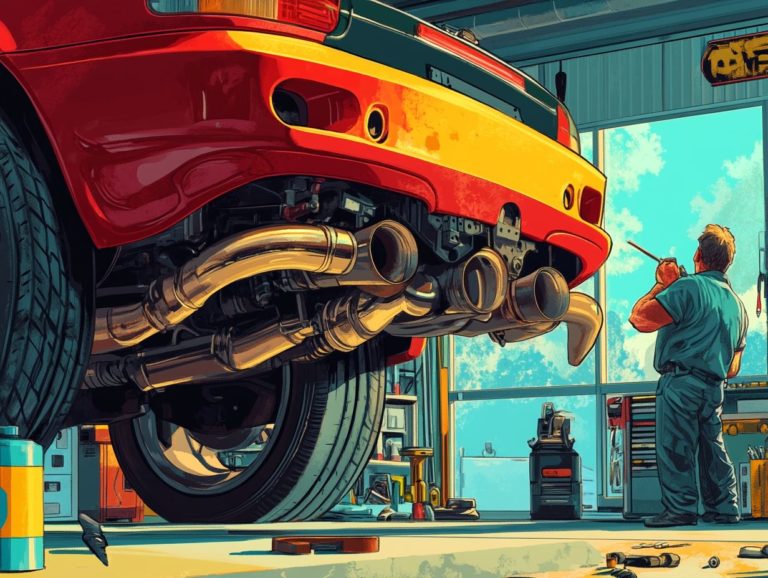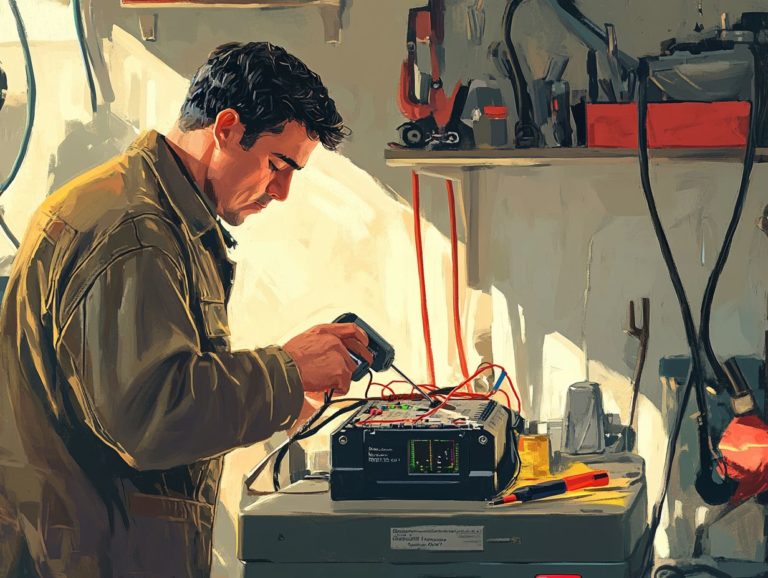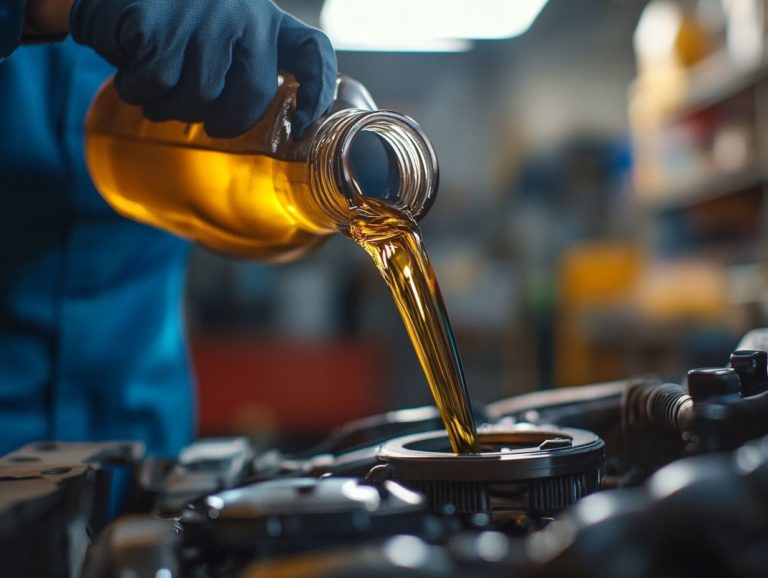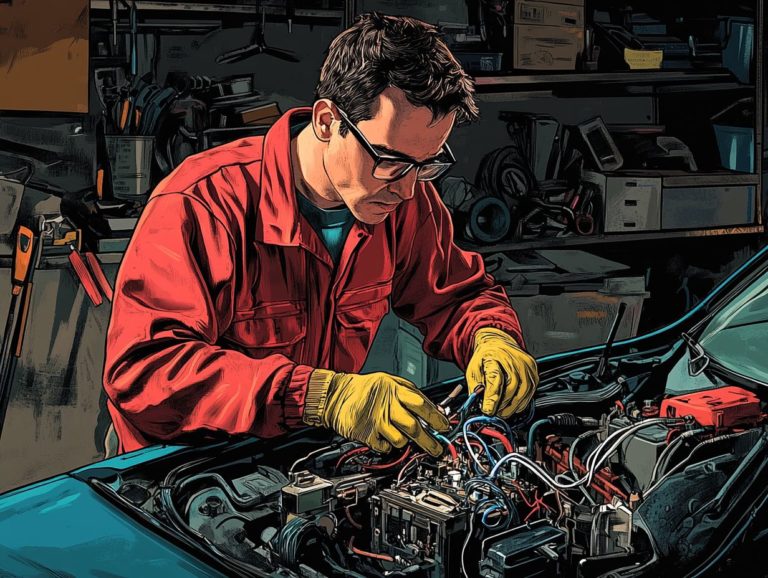What Are the Common Signs of Brake Wear?
Understanding brake wear is essential for maintaining the safety and performance of your vehicle. It involves delving into the various causes of brake wear and identifying key signs to monitor, such as visual indicators, audible cues, and changes in performance.
You’ll also encounter common brake issues and their types, along with practical maintenance tips designed to prevent wear. Recognizing when it s time to consider replacing your brakes will not only keep your ride smooth but also ensure your safety on the road.
Contents
Key Takeaways:
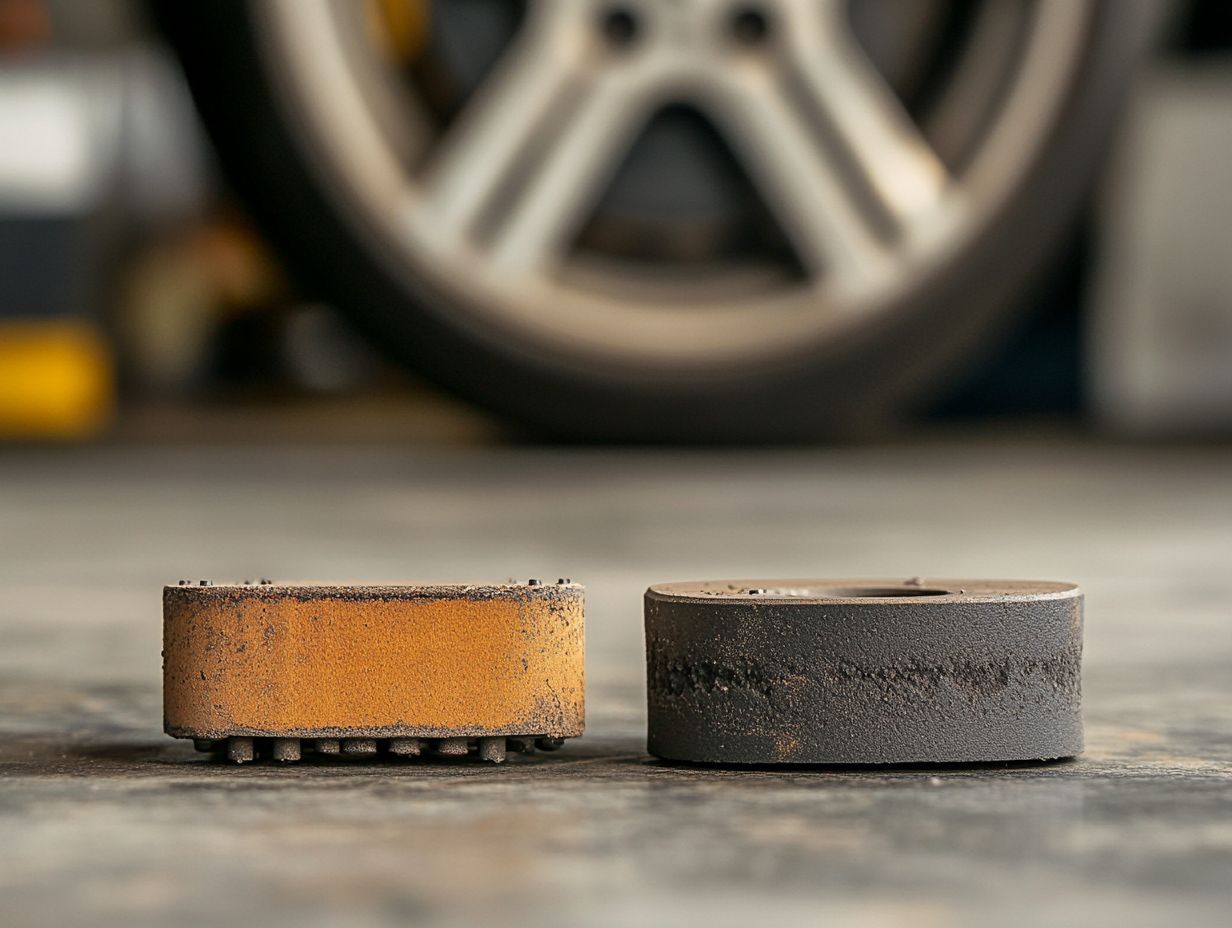
- Regular maintenance and proper care can prevent brake wear and keep your vehicle safe.
- Visual and audible signs, such as screeching or grinding noises and vibrating or pulsating brakes, can indicate brake wear.
- If you notice any changes in your vehicle’s braking performance, have your brakes checked by a professional to prevent potential accidents.
What Causes Brake Wear?
Understanding the underlying causes of brake wear is crucial for maintaining your vehicle’s braking system, ensuring both optimal performance and safety.
Several factors contribute to the wear of brake pads, including the quality of materials, your driving habits, and environmental conditions. Frequent hard braking can lead to uneven pad wear, necessitating more regular inspections.
Elements such as brake fluid quality and the condition of other components, like rotors and calipers, also influence the overall functionality of your braking system over time.
Signs of Brake Wear
Being attuned to the signs of brake wear can greatly enhance your vehicle’s safety and help you avoid expensive brake issues down the line. One common sign to watch for is the brake warning light on your dashboard. This light means it s time for a thorough inspection.
If you hear unusual sounds like a squeaking or grinding noise when you press the brake pedal consider this a clear warning that your brake pads might be worn and need your immediate attention.
Visual Indicators
Visual indicators play a vital role in spotting potential brake issues before they develop into significant problems. When conducting a visual inspection, you should look for signs of brake pad wear, such as thickness and discoloration, as well as the condition of critical components like rotors and calipers. If the brake indicator light on your dashboard illuminates, it s a clear signal that maintenance is needed, alerting you to possible concerns within the braking system.
Beyond these initial signs, it’s crucial to examine the rotor surface for any grooves or uneven wear, which could suggest underlying issues. Regular inspections by qualified automotive technicians can help catch these subtle nuances early, preventing costly repairs down the road.
They also take the time to assess brake fluid levels, ensuring that the system operates at its best. By keeping an eye on these details, you not only enhance your vehicle’s safety but also prolong the lifespan of the braking components, giving you peace of mind as you navigate the roads, confident in your brakes performance.
Audible Cues

Audible cues serve as crucial indicators of your braking system’s health, alerting you when it s time for servicing. If you hear a squeaking noise while pressing the brake pedal, it’s often a sign that your brake pads are wearing thin and should be addressed soon.
A grinding noise, on the other hand, can signal that the pads are completely worn down, putting other brake components at risk of damage. By recognizing these sounds, you can sidestep more serious brake issues and avoid unnecessary repair expenses.
Plus these warning signs, you might encounter a high-pitched squeal when moisture gets trapped between the pads and rotors, suggesting it’s time for an inspection. Likewise, if you feel a pulsing sensation each time you press the brake, it likely indicates warped rotors that shouldn’t be overlooked.
These sounds not only alert you to potential maintenance needs but also highlight the importance of regular brake inspections.
If you hear any unusual noises, don t wait! Act quickly to prevent serious brake issues.
For every driver, responding quickly to these warning signs is vital to maintaining optimal braking performance and ensuring overall vehicle safety.
Performance Changes
Changes in braking performance can serve as critical indicators of underlying brake issues. For instance, a soft brake pedal often suggests a problem with brake fluid or air in the brake lines. This can severely impact your braking capability. Keeping an eye on how your vehicle responds during braking can help you catch potential problems early.
An increase in stopping distance is a telling sign that your braking system may be compromised. If your vehicle takes longer to come to a complete stop, it likely means the brakes are losing their effectiveness and need your attention.
You might also notice unusual vibrations or noises. These can indicate that components like the pads, rotors, or even the calipers are wearing down. These changes can directly relate to brake fluid levels; low fluid can hinder the system’s functionality, ultimately affecting the overall integrity of your braking system.
Regular checks and maintenance keep your brakes in top shape your ticket to safe driving!
Common Brake Problems
Be aware that common brake problems can pose serious risks to your vehicle’s safety, necessitating immediate attention. Issues frequently stem from worn brake pads, damaged rotors, or brake parts that aren t working properly, all of which can make your brakes less effective.
Regular brake servicing is crucial for addressing these concerns. It ensures that every component functions optimally and significantly enhances your overall vehicle safety.
Types of Brake Issues
Throughout the lifespan of your vehicle, various brake issues may emerge, each demanding specific attention. Common problems include worn brake pads and warped brake rotors, often the result of excessive heat. Brake parts that aren t working properly can lead to uneven pad wear. Identifying these issues early is essential for effective brake repair and maintenance.
For example, a squeaking noise when your brake pads wear down too much is a clear sign that replacement is necessary. Warped rotors, frequently caused by prolonged braking or overheating during heavy use, can manifest as vibrations when you brake.
A malfunctioning brake caliper can cause uneven braking, making your vehicle pull to one side. Experts emphasize the importance of routine brake inspections. It’s recommended to have them checked at least once a year or before embarking on long trips.
Regular maintenance not only extends the life of your brake system but also ensures optimal performance on the road.
Preventing Brake Wear

Preventing brake wear is crucial for upholding the integrity of your braking system and ensuring your vehicle s safety over time. Regular maintenance practices, such as timely brake fluid checks, thorough visual inspections, and the prompt replacement of brake pads, can significantly extend the lifespan of your brake components.
By proactively addressing these factors, you not only avoid costly repairs but also enhance your overall braking performance.
Maintenance Tips
Implementing consistent brake maintenance tips can greatly extend the lifespan of your braking system. Regularly check your brake fluid levels, ensure timely replacement of brake pads, and schedule routine brake servicing to effectively mitigate issues related to brake pad wear.
To maintain optimal function, conduct visual inspections of the brake components. Look for signs of wear or damage, such as cracked rotors or worn-out pads. Catching these issues early can save you trouble later.
Utilizing high-quality brake parts, like ADVICS brake pads, can make a remarkable difference in your vehicle’s responsiveness and reliability. Don t hesitate to reach out to brake specialists for expert guidance they can provide tailored insights and support.
Regular attention to these details fosters a safer driving experience and helps you avoid costly repairs down the line.
When to Replace Brakes
Understanding when to replace your brakes is essential for ensuring your vehicle’s safety and optimal braking performance.
Look for signs like excessive wear on your brake pads, a glowing brake indicator on your dashboard, or any unusual noises coming from your brakes. These are clear signals that it is time for servicing. Ignoring these warnings could lead to more serious brake issues down the line and heighten the risk of accidents.
Staying alert to these signs is not just smart it is essential for your safety on the road!
Signs It’s Time for New Brakes
Several signs indicate that it is time for new brakes. Recognizing them can save you from costly repairs while enhancing your vehicle’s safety.
If you hear a squeaking noise when you brake or see that pesky brake indicator light staying on, these are unmistakable signals of potential brake pad wear.
Other symptoms, like a soft brake pedal or a noticeable decrease in stopping power, require your immediate attention and should lead you straight to a brake specialist.
If you feel vibrations while braking or hear a grinding sound, it is likely that your brake rotors the round discs that your brake pads press against to slow or stop your vehicle are damaged. This could compromise your vehicle s overall performance.
You should also be especially attentive to how your vehicle behaves when you decelerate; any unusual responses could point to a deeper issue.
Regular inspections are vital for maintaining optimal braking functionality.
Once you spot these warning signs, do not wait! Schedule a comprehensive brake check right away. Prioritizing brake maintenance not only keeps your vehicle running efficiently but also significantly boosts the safety of everyone on the road.
Frequently Asked Questions
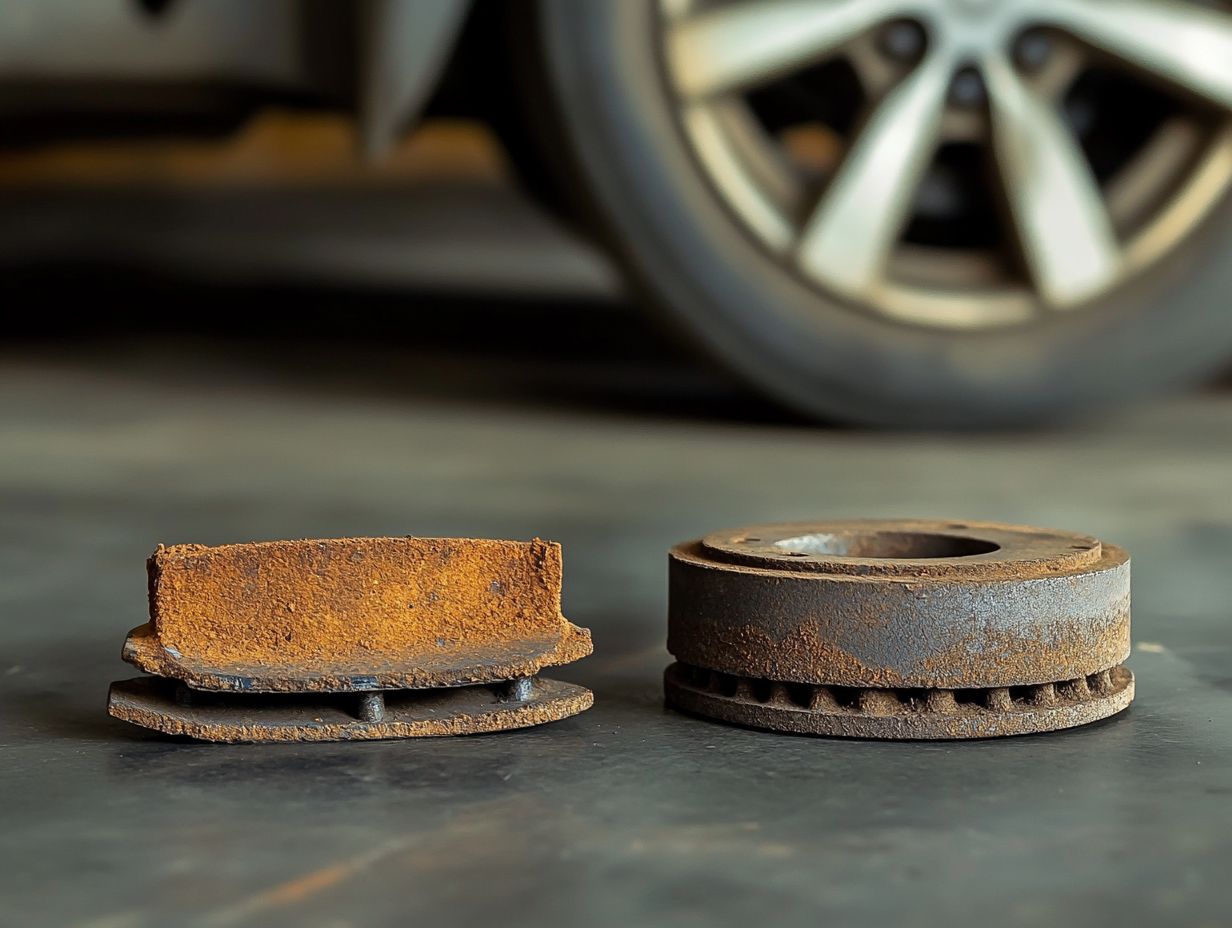
What are the common signs of brake wear?
Some common signs of brake wear include squealing or grinding noises when applying the brakes, a vibrating or pulsating sensation when braking, longer stopping distances, and a low brake pedal.
How can I tell if my brakes need to be replaced?
Aside from the common signs of brake wear, you may also notice visual indications such as worn brake pads or discs, a dashboard warning light, or a drop in brake fluid level. It is always best to have a professional mechanic inspect your brakes for an accurate assessment.
What causes brake wear?
Brake wear is a natural occurrence due to the friction and heat produced when braking. Factors such as driving habits, road conditions, and the type of brake pads can affect how quickly your brakes wear out.
How often should I replace my brakes?
The frequency of brake replacement depends on the factors mentioned above, but on average, brake pads should be replaced every 50,000 miles. It is recommended to have your brakes checked at least once a year or every 12,000 miles.
Can I still drive with worn brakes?
It is not recommended to continue driving with worn brakes as it can compromise your safety on the road. Additionally, it can cause further damage to other components of your braking system, resulting in more costly repairs.
What can I do to prolong the life of my brakes?
To help prolong the life of your brakes, practice good driving habits such as avoiding sudden stops and slowing down gradually. Regularly inspect and maintain your brakes, and replace them with high-quality brake pads and discs.


